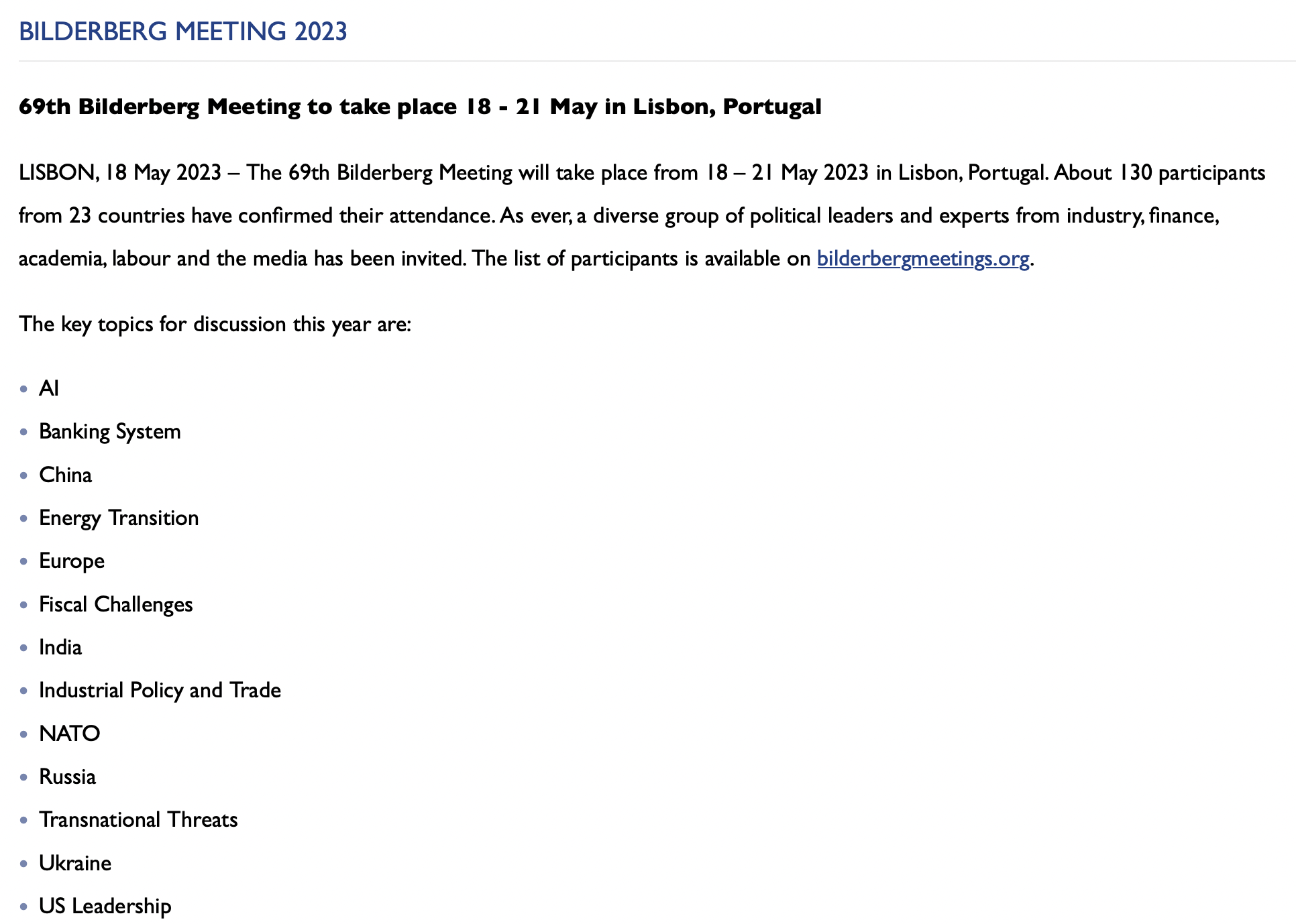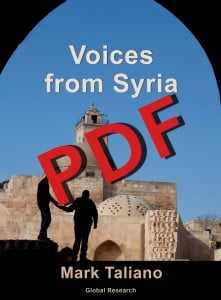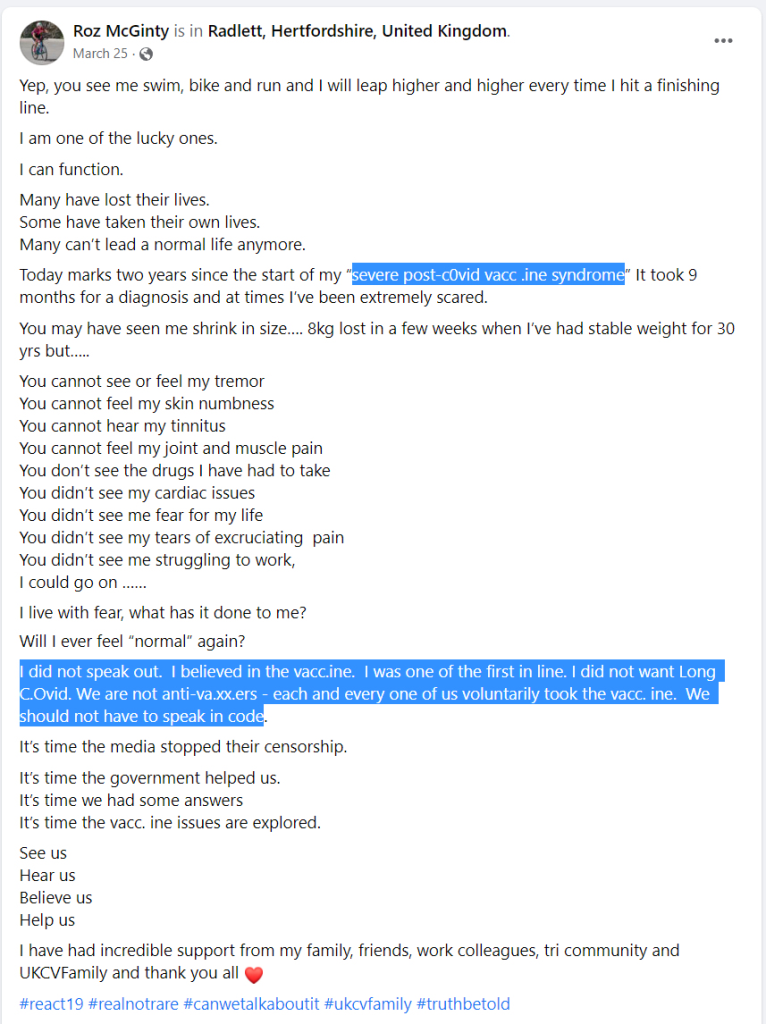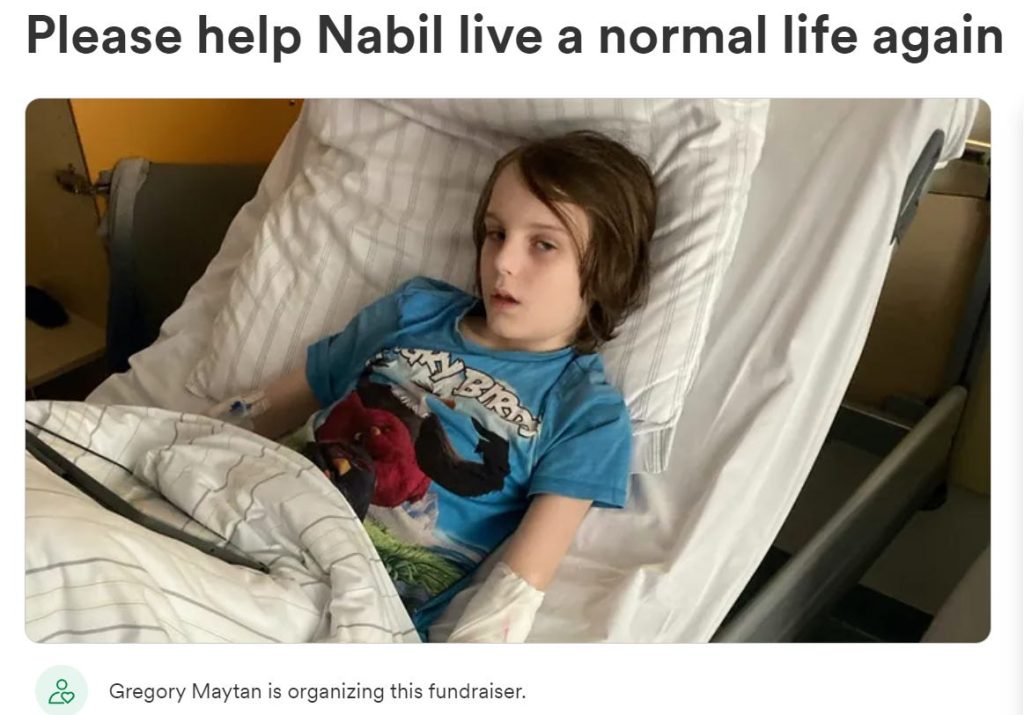All Global Research articles can be read in 51 languages by activating the Translate Website button below the author’s name.
To receive Global Research’s Daily Newsletter (selected articles), click here.
Follow us on Instagram and Twitter and subscribe to our Telegram Channel. Feel free to repost and share widely Global Research articles.
First published on March 23, 2023
***
Three years ago the Western World came to a standstill. The official Covid-19 narrative depicted a strange suddenly-super-spreading, deadlier-than-flu virus hailing from China that landed in Northern Italy.
On February 20, 2020 the first alleged case of Covid-19 was discovered in the West in the Lombardy town of Codogno, Italy. Later that day the Italian government reported their first “Covid-19 death.”
Dramatic media reports emerging from Northern Italy were hammered into and onto the Western psyche giving the impression there was a mysterious “super spreading” and “super lethal” novel virus galloping across the region infecting and killing scores of people.
Harrowing reports out of Bergamo, a city in the alpine Lombardy region of Northern Italy, spoke of coffins stacked high, “covid-related deaths growing relentlessly” and the alarming need for military assistance to remove the grim volume of dead bodies piling up.
In early March 2020 hospitals in Northern Italy were reporting a “tsunami of deaths” due to the Covid crisis and overcrowded conditions due to “fighting the coronavirus outbreak”, which were pushing hospitals and staff to the breaking point as doctors were “taking the dead from morning until night.”
Using the entire machinery of the state, Italian Prime Minister Giuseppe Conte began issuing a rolling set of government decrees culminating in Italy becoming the first country in the world to implement a national lockdown. These mandates would set the stage for lockdowns throughout the Western world.
Three years later a comprehensive evaluation of the story about the alleged Italian medical emergency in Spring 2020, reveals a tale of the disturbing epidemiological history of Northern Italy, mass media manipulation and deceptive reporting utilized to create the illusion of a new epidemic.
A multitude of questions and inconsistencies surrounding the Italian story soon surfaced. Ascribing this strange set of convergent circumstances to a viral event strained credulity.
Were these overcrowded conditions in Italian hospitals genuinely the result of a unique viral pathogen or were there other causal factors?
Were these anomalous spikes in excess deaths in Northern Italy verifiably caused by the arrival and spread of a novel deadly virus?
How was it that this virus spread across thousands of kilometers within days and peaked synchronously in selected locations?
How was it that this virus was able to spread so fast across thousands of kilometers, peaking at the same time in those selected locations, yet wasn’t contagious enough to spread to nearby locations?
How was it that this virus waited for a government decree and only then began to create excess death?
How was it possible that all countries in the West and beyond adopted similar “health” measures as carried out in Italy, virtually “overnight”, measures that resembled a de facto police state rather than medical initiatives?
Why Italy?
Image: At the entrance to the hospital, a sign reads: “You are the real heroes”, Bergamo, Italy, March, 2020. | Photo: Twitter/ @orlandoQva

A brief timeline of the series of events as they unfolded in Northern Italy in Spring 2020:
January 31, 2020 – The Italian Council of Ministers declares a 6-month national emergency handing the coordination of the COVID-19 emergency responses to the Head the Civil Protection Department, following the detection of the first two COVID-19 positive people in Rome – two Chinese tourists traveling from Wuhan;
February 20, 2020 – First Covid-19 case of Italian citizen diagnosed in Codogno.
78-year-old Adriano Trevisan, a retired bricklayer from the village of Vo’ Euganeo near Padua in the Veneto region became the first Covid death of a European recorded. The deceased tested positive for the virus and died in the hospital while being treated for pneumonia.
February 23, 2020 – The Italian government introduces the first movement and access/exit restrictions around hotspots, known as ‘lockdown red zones.’
On this same day the Italian Ministry of Health issued PCR testing guidance to 31 labs across Italy. Cases surge.
February 25, 2020 – Further restrictive measures introduced across Italy.
February 27, 2020 – A National Surveillance system, coordinated by the ISS (National Institute of Health) is set up to oversee the collection and collation of daily data.
March 1, 2020 – Creation of ‘lockdown red zones’ expands.
March 4, 2020 – Nationwide closure of schools and universities are declared in Italy.
March 8, 2020 – Decree Of The President Of The Council Of Ministers expands restrictions to all Lombardy and large areas of Northern Italy.
March 9, 2020 – The government of Italy under Prime Minister Giuseppe Conte extends the lockdown to the whole of Italy restricting the movement of the population except for necessity, work, and health circumstances.
March 11, 2020 – The World Health Organization declares the novel coronavirus (COVID-19) outbreak a global pandemic. Italy declares closure of all restaurants, pubs, theaters and social activities.
March 18, 2020 – European Central Bank announces huge money printing program to keep the financial system functioning. 750 billion euro bailout given to financial sector to fight the “coronavirus crash.”
March 22, 2020 – Cessation of all non-essential productive activities complete lockdown factories are closed and all nonessential production is halted across Italy.
March 25, 2020 – Further restrictions imposed to people’s movements except for essential reasons (e.g. work, health and getting supplies).
March 27, 2020 – Peak in number of daily Covid deaths in Italy.
April 9, 2020 – ‘Liquidità’ Decree goes into full effect, including temporary measures to facilitate access to loans, support business continuity and corporate liquidity and measures to support export, internationalization and business investment.
May 4, 2020 – Reopening of most factories and various wholesale businesses, within pre-set health safety protocols.
While such a chronology can serve to refresh our memory and provide a coherent understanding of the sequence of events, it is not a substitute for real history.
As they say– the devil is in the details.
The details in Northern Italy start with massive pollution problems and the accompanying long-standing chronic health conditions which have afflicted the region for years.
Pollution and Chronic Illness
Everyday life in the Lombardy region is bedeviled with dangerous living conditions and health challenges– numerous acute health problems facing an aging population have been documented for a long period of time.
The Po River Valley in Northern Italy is cited as having the worst air quality in all of Europe. The air quality in the region has been deteriorating for many years. The cities in the Po River Valley are cited as having the highest mortality burdens associated with air pollution in all of Europe.
Along with the sheer volume of pollutants, the Po River Valley is known for its unique characteristics of low winds and prolonged episodes of climatic inversions turning it into a holding tank for atmospheric pollution.
The Lancet Planetary Health report from January 2021 estimated death rates associated with fine particulate matter and nitrogen dioxide pollution in 1000 European cities. Brescia and Bergamo in the Lombardy region held the morbid distinction of having the highest death rate from fine particulate matter in Europe. Two other Northern Italian cities, Vicenza and Saronno placed fourth and eighth respectively, in the list of top ten cities in this category. These locations correspond precisely with the highest incidents of upper respiratory infections occurring in Northern Italy as reported in the official pandemic narrative.
Ongoing and accelerating “epidemics” of idiopathic pulmonary fibrosis, (a severe and progressive lung disease), interstitial lung disease and high rates of bronchial and lung cancer were signature epidemiological features of Northern Italy long before an alleged virus ventured onto the scene.
In the Lombardy region there is also an ongoing asbestos problem from occupational asbestos exposure in the 1960s and 1970s. A 2016 study, “Incidence of mesothelioma in Lombardy, Italy: exposure to asbestos, time patterns and future projections, predicted a rise of malignant mesothelioma (MM), an aggressive and deadly form of cancer primarily impacting the linings of the chest and abdomen. “This study documented a high burden of MM in both genders in the Lombardy Region, reflecting extensive occupational (mainly in men) and non-occupational (mainly in women) exposure to asbestos in the past. Incidence rates are still increasing; a downturn in occurrence of MM is expected to occur after 2019.”
A further study, “Investigating the impact of influenza on excess mortality in all ages in Italy during recent seasons (2013/14–2016/17 seasons)”, reveals that rates of death due to the common flu have increased markedly over the past decade. This study described a nearly fourfold increase in flu mortality during the covered time period. By the 2016/17 season the totals skyrocketed to 24,981 excess deaths attributable to flu epidemics.
Adding to the ongoing problems of air pollution, residents in the Po River Valley are plagued by high levels of industrial livestock runoff in rivers and tributaries.
The Lombardy region creates vast amounts of animal waste as it produces more than 40 percent of Italy’s milk production while over half of Italy’s pig production is located in the Po River Valley.
Throughout Italy issues with poisoned soil caused by past and present industrial activities and accidents have beset the land and its people.
Heavy industrial activity and past industrial poisoning in northern Italy afflict the region with yet another mass of toxic exposures.
In 1976 Seveso, Italy experienced “one of the worst industrial accidents in the past century. The Seveso disaster occurred in a chemical manufacturing plant 12 miles north of Milan in the Lombardy region of Italy. It resulted in the highest known exposure to 2,3,7,8-tetrachlorodibenzo-p-dioxin (TCDD) in residential populations in history and became a “testament to the lasting effects of dioxin.”
Dioxin is a known cancer-causing agent and many people who were living in and around Seveso at the time would be at increased risk of cancers later in life. Someone who turned 20 years of age in 1976 would now be in their 60’s during the Covid Era.
This is consistent with what has been widely reported among Nembro men, with cancer being theleading cause of death in this demographic and lung cancer being the most common type of cancer.
Austerity Measures and Health Infrastructure
Compounding the abysmal environmental conditions facing the people of Northern Italy are austerity measures of the past two decades which have decimated Italian public services, severely decreasing health care resources.
Examining the state of the hospitals in northern Italy, long before the “pandemic”, a pattern starts to emerge.
A 2019 review on the current state of Italian hospitals, “Health & Hospitals in Italy. 17th Annual Report”, noted a “significant increase in 2019 of people on waiting lists and for longer times, compared to the already problematic situation in 2018,” and a, “pronounced deterioration, over the last 5 years, of the “connection” systems between general medicine and hospitals and between these and post-hospitalization services (rehabilitation, long-term care, assisted living homes and home care service).”
The charged atmosphere and resulting firestorm created by a trumpeted “viral invasion” brutally exposed the effects of 20 years of cuts to the national health care system.
A 2013 Oxfam report on the impacts of austerity measures, “THE TRUE COST OF AUSTERITY AND INEQUALITY Italy Case Study” highlighted the decline in Italian health services.
The report noted that in 2000, Italy was 2nd in the world for health coverage. The reports cited thatby 2011, due to yearly declines in health spending, “more than nine million people declared that they could not access some health services for economic reasons.”
Further cuts magnified an already volatile situation. Over the period 2010–19, the Italian National Healthcare Service suffered financial cuts of more than €37 billion as it experienced a progressive privatization of health-care services. Government spending on healthcare, decreasing for years, spiraled down to a rate below what the WHO considered capable of offering basic health care.
These comprehensive cuts also had severe effects on the healthcare workforce and available hospital beds and equipment, effectively hampering the ability of care facilities to effectively treat patients.
The period from 2009 to 2017 saw 5.2 percent of healthcare staff cut. In the last 10 years, 70,000 beds were lost. In acute medical units bed availability dropped from 922 per 100,000 inhabitants in 1980 to 262 per 100,000.
Data from 2020 show a total of 5,179 beds in intensive care units (approx. 8.9 beds per 100,000) for all of Italy, a population of just over 60 million in 2020.
At regular operational level in 2020 the 74 Lombardy hospitals, servicing a population of 10 million, had approximately 720 ICU beds, with up to 90% of them usually occupied in the winter.
By March 10, 2020 there were 877 people hospitalized in ICUs, units in Lombardy were saturated and requests to transfer patients to other regions were prevalent.
The net effect of these radical cuts to hospital infrastructure and services in the context of the covid hysteria were predictable; for years Italian ICU physicians have been reporting that flu outbreaks cause ICU units to fill up as was the case in locations across the world.
The roaring silence from the media on these inconvenient facts kept the public in the dark on the realities of the crumbling Italian health care system.
Only “the virus.”
In light of this data, it is no surprise that individuals with routine and mostly reversible seasonal respiratory infections once admitted to hospitals might not be treated appropriately or successfully.
Iatrogenic deaths/hospital protocols
In Spring 2020 Italian health officials introduced unprecedented health protocols specifically for Covid.
These new protocols, including early intubation and accompanying sedation, were deemed necessary to protect doctors and nurses at a time when the viral load of the alleged lethal pathogen was purportedly lower.
Were these new protocols appropriate for treating upper respiratory problems?
Mechanical ventilators, that push oxygen into patients whose lungs are failing, quickly became the accepted go-to practice throughout the Italian hospital system. Doctors made extravagant claims that ventilators had “become like gold.”
Employing ventilators involves sedating the patient and placing a tube into the throat. Drugs such as midazolam, morphine sulfate and propofol are used in accompaniment with this procedure; drugs that come with contra-indications and warnings of side effects including respiratory depression and respiratory arrest. Midazolam and propofol are two drugs that are regularly used for assisted suicide and to put down death row inmates.
During the initial wave of hysteria in March 2020 the Italian government requested and received an emergency procurement of midazolam from Germany as their hospitals “suddenly needed 3-4 times the normal amount of this drug.”
The Italian Civil Protection undertook a fast-track public procurement to secure 3800 additional respiratory ventilators.
As early as April 2020 the reliance on mechanical ventilation came under fire from Italian experts. Luciano Gattinoni, a world-renowned Italian intensive care specialist suggested that “mechanical ventilation was being misused and overused.”
Marco Garrone, an emergency doctor at the Mauriziano Hospital in Turin, Italy remarked, “We started with a one-size-fits-all attitude, which didn’t pay off,” Garrone said of the practice of putting patients on ventilators right away, only to see their conditions deteriorate. “Now we try to delay intubation as much as possible.”
Even as some health officials pushed to get more ventilators to treat coronavirus patients, some doctors were moving away from using them.
Questions surrounding actual causes of “Covid deaths” of the frail and elderly placed on ventilators began to surface for the simple reason that doctors were noticing unusually high death rates for coronavirus patients on ventilators.
Could it be that it was medical malfeasance, and not a novel pathogen, that was igniting this tinderbox in the hospitals and creating a feedback loop of public panic?
Could it be that what spread through the Italian hospitals in Spring 2020 was an epidemic of iatrogenesis?
Was it possible that the Spring 2020 mortality event in Northern Italy was not an epidemiological or biological aberration but the result of an unprecedented set of administrative mandates by the Italian government and public health officials?
Emergency Measures and Lockdown Impacts on population
Image: March 1, 2020 shows medical supplies, including masks, gloves and protective suits, donated to Italy by Lishui City, east China’s Zhejiang Province. (Xinhua)
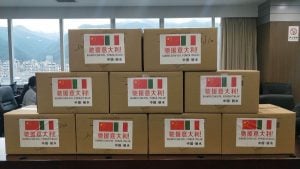
The Italian government, public health officials and regional doctors proclaiming a “novel virus” had landed in Northern Italy, insisted that emergency preparations be activated to prepare for this “massive” increase in Covid-19 patients. That these forecasts were speculations, using linear model forecasts, coming from doctors with conflicts of interest was of little interest to reporters.
A progressive set of restrictive decrees, including lockdowns of villages and cities, were swiftly implemented. These directives served to further terrify and disorient an already panicked populace.
Citizens were told to stay home and were banned from entering certain areas; fines were levied for those who transgressed. Most shops and businesses were ordered to shut down.
Residents described the abandoned streets as surreal and “fearful.”
Farm owner Rosanna Ferrari said, “We’re experiencing a bit of a panic. Supermarkets have been stormed since last Friday. There are queues outside of the chemist. They said they’ll come, house to house, to collect saliva samples today.”
Angelo Caperdoni, the mayor of Somaglia, described the alarming situation, “It was difficult to contain the panic at first, especially as a lot of false news was circulating on social media that people believed to be true. There is still panic regarding food provisions. Many people went to Codogno yesterday to try and stock up.”
Franco Stefanoni, the mayor of Fombio, also under lockdown, described the harried scene in military terms as he noted the town’s two mini-markets had been “besieged”, as “people have been racing to the supermarket to buy 20kg of pasta or 30kg of bread.”
Former president of Italy’s higher health council, Roberta Siliquini, provided a more reasonable explanation for the excitement: “We have found positive cases in people who probably had few or no symptoms and who may have overcome the virus without even knowing it.”
Cooler heads advising calm were systematically buried beneath a barrage of draconian government edicts, manufactured hype from vested interests and the sustained onslaught of media agitation and deceptive reporting.
Deceptive Reporting
Mainstream news outlets and social media channels kicked into high gear warning of “waves of death” cutting across Northern Italy from a rampaging virus which was creating overcrowded emergency rooms and requiring convoys of army vehicles to transport corpses.
Television images of stacked coffins in Bergamo were catapulted across the airwaves and reported in lockstep, terrifying the Italian populace and much of the world.
A detailed inspection of these reports revealed that the media fear mongering fastidiously avoided all reasonable explanations when not outright lying.
The media kept silent on the fact that as recently as 2018 hospitals in Milan were overrun with viral lung infections. Due to the aforementioned pollution problems, decimated health infrastructure and aging population, overrun hospitals have become a seasonal feature of the national profile of Italy over the last few decades.
Mainstream news also refrained from mentioning the reality of hospital worker shortages and the reasons for this. Due to panic-mongering and the government edict of border closures the Eastern European workforce of nurses, who comprise a large portion of the labor force in Italian health care, quickly fled the country leaving the hospitals and care centers with skeleton crews.
This resulted in sudden abandonment of the fragile elderly and the disabled by those who normally attend to them leading to an avalanche of deleterious consequences as many of the abandoned elderly from care homes were shipped to already overstretched hospitals.
This vicious cycle of worker shortages in care homes leading to runs on short-staffed hospitals led to complete collapse of care for the elderly and the disabled adding to the chaos in hospital systems in regions where harsh government policies were enacted.
Covid Case Creation
Upon entry into the hospital the de facto response for incoming patients was the ubiquitous PCR swab used to determine if the patient had “Covid-19.” If deemed a “positive case” this activated the deployment of deadly hospital protocols – yet another vicious cycle of medical malfeasance which ensured the proper dosage of fear would continue.
Though it was noted as early as March 2020 that there were major problems with PCR as a diagnostic tool, the media, and general public, accepted at face value the validity of this technique as a diagnostic method.
High cycle thresholds were one of the problems cited. This created absurd numbers, as high as 97%, of “false positives”, leading to a grossly exaggerated number of Covid cases and deaths.
Even earlier, in February of 2020, test reads from PCR results in Italy were called into question. as they were using a single SARS-CoV-2 target gene as clinical proof of a “positive” test.
Italian Nobel Prize Candidate Dr Stefan Scoglio, in noting this scientific fraud stated: “Today I discovered a new element of this real fraud, the choice to reduce the positivity to the swab by detecting only one of the three genes that would define SARS-CoV-2. If the virus were present, all 3 would have to be found, because if the virus is intact, the only case in which it can have a pathogenic role and infect, the test must find all 3 genes.”
The misuse of PCR led to the confounding issue of whether people in the Italian hospitals were
actually dying from “Covid” or from the effects of mass social breakdown and then being mislabeled as a “Covid death” as determined by this fraudulent process.
Manufacturing Covid Deaths
The answer to that question is found in later reports which made clear that nearly all of the “Covid deaths” were not in fact caused by a viral pathogen- nearly all of the individuals who died from the alleged pathogen had multiple comorbidities.
A March 17, 2020 report from the Italian Institute of Health (ISS) noted that 99.2% of Covid-related deaths were from people who had pre-existing chronic conditions.
One week later, as reported in a March 23,2020 article in the UK Telegraph, professor Walter Ricciardi, scientific adviser to Italy’s minister of health remarked:
“The way in which we code deaths in our country is very generous in the sense that all the people who die in hospitals with the coronavirus are deemed to be dying of the coronavirus.
On re-evaluation by the National Institute of Health, only 12 percent of death certificates have shown a direct causality from coronavirus, while 88 percent of patients who have died have at least one pre-morbidity – many had two or three.”
Ricciardi was citing a March 20, 2020 follow-up report from the ISS (in English here) and either misread the actual figures in the report or was misquoted. While 12% having zero comorbidities indicated a gross exaggeration of the impacts of “Covid”, the accurate figure in the report was 1.2% meaning 98.8% of the listed “Covid deaths” had pre-existing chronic conditions.
By the early summer of 2020 even the mainstream press admitted that virtually all Covid fatalities from Italy suffered from previous chronic conditions.
By October 2021 Italian newspaper Il Tempo reported that the Italian Institute of Health revised the number of people who have died “from covid” rather than “with covid” from 130,468 to 3,783.
It is a well established fact that Italy labeled anyone who died with a “confirmed SARS-CoV-2 infection”, confirmed via a dubious PCR result regardless of the real causes of death, as a victim of “Covid-19.”
At the same time according to Istat (National Institute of Statistics) there was a general increase in mortality from all causes from March 1 to April 4, 2020 compared with the average for the same period in 2015-2019. Bergamo sat at the top in the growth of mortality among municipalities with a staggering 382.8% increase in deaths.
This mortality increase resulted not from a host of causes associated with alleged SARS-CoV-2 infection but from multiple other factors. Canceled cancer screenings, delayed treatments, reluctance to call ambulance services in the event of an accident or emergency became commonplace in the midst of the Corona hysteria allowing conditions to worsen beyond possible treatment.
Delayed medical care is known to increase morbidity and mortality associated with both chronic and acute health conditions.
A mere two day delay in seeking treatment of a myocardial infarction can turn a simple and treatable condition into a dangerous and life threatening defect.
Research by the Italian Society of Cardiology established that heart attack mortality more than tripled during the Covid emergency as patients fearing infection stayed away from the hospital.
Ciro Indolfi, Professor of Cardiology at the Magna Graecia University of Catanzaro, noted that, “the organization of the hospitals… in this phase was dedicated almost exclusively to Covid-19 and many cardiological wards were used for infectious patients. Furthermore, for fear of contagion, patients delay access to the emergency room and arrive at the hospital in increasingly serious conditions, often with arrhythmic or functional complications, which make therapies that have proven to be life-saving such as primary angioplasty much less effective.”
Reports of exaggerated and manipulated “deaths from covid” were kept far from public view and certainly no match for stories of military trucks hauling away human carcasses and images of piled up coffins in Bergamo that were burned into people’s brains.
Always and only “the virus.”
The Lies of Bergamo
The now infamous Bergamo image of three long rows of lined up coffins spread like wildfire and shocked the world without any investigation of the veracity of the photos by the duplicitous media hyenas who instead fanatically fanned the Covid flames at every turn.
Responsible reporting would have authenticated that the photo in question was taken in a hangar at Lampedusa Airport back on October 5, 2013.
The coffins in that photo were filled with corpses of African migrants who perished in a shipwreck, the body count was an estimated 360 deaths, off the coast of Lampedusa, an Italian island off the coast of Tunisia.
The reports of trucks hauling away corpses and crematoria in Lombardy being overrun had more mundane explanations which were anathema to the prevailing media narrative.
The need for trucks to haul away corpses, which the media repeated elsewhere, was readily explained by a combination of congruent factors. The dead were being removed by the military as funeral directors fearing “the killer virus” refused to pick up the bodies as they would during normal times.
The fabricated and magnified fear that made funeral directors eschew their normal duties was compounded by an emergency national law banning civil and religious ceremonies, including funerals. This unprecedented move, for an overwhelmingly Catholic country that normally relied on ritual burial, was put into effect in early March.
The danger of a “highly transmissible and deadly new disease” now firmly etched into the psyche of Italian citizens added to the frenzied situation.
Families who would normally follow the Catholic practice of burial were opting for cremation of the deceased in unprecedented numbers for fear of catching the disease from the dead.
In the north of Italy there was a 50% increase in requests for cremation which quickly overwhelmed the few small crematoria that did exist in Italy.
A Regional Curiosity

Interestingly not all of Italy was hit by the purportedly “super-spreading” virus. The excess deaths in Spring 2020 were limited to Northern Italy and to specific areas within Northern Italy.
The epicenter of the covid virus was reportedly located in the Lombardy region. The localized Lombardy crisis, portrayed to the world as the “Italian” zombie apocalypse, appeared not in the streets, shops or homes in Lombardy, but solely in hospitals and care homes situated in urban centers.
How did the alleged deadly pathogen bypass Central and Southern Italy which have similar demographics?
Data from March 26, 2020 confirms “the virus” did not migrate South honoring jurisdictional boundaries. Four regions in Northern Italy accounted for 89 percent of all Covid “cases.” This pattern would remain the same even as an onslaught of testing was rolled out across the country.
One theory that surfaced suggested that since Lombardy has a high number of Chinese workers in the garment industry the “virus” was brought to Italy by Chinese migrant workers and spread through the region. This hypothesis fell apart when it was noted that Tuscany, a region in Central Italy, which has the largest concentration of Chinese people in Italy and all of Europe, somehow wasn’t hit by the “virus.”
The fact that Southern Italy didn’t get hit by the “virus” also turned the official narrative on its head.
A significant difference in the social structures between North and South Italy entails most elderly in the South living with or very near to their children. This tradition of extended familial support is known to create conditions conducive to well-being and security.
Per capita there are more long term care facilities (LTCF’s) in the north of Italy with many more residents living in these precarious conditions.
With what we now know it is reasonable to conclude that for a large number of individuals in the north residing in LTCF’s, where conditions are often unhygienic, the nutrition is poor and the care is often negligent, a perfect storm for wholesale death was created.
The subsequent mass departure of overburdened and terrified staff and creation of mass anxiety within a disabled, fragile and abandoned populace virtually guaranteed a mass death event in this sector of the Northern Italian populace.
Critical thinking 101 informs us that with 50 percent of the “COVID deaths” in Italy occurring among nursing home residents and the average age of “Covid death” being at or above normal life expectancy, this was decidedly not an issue of “COVID deaths” per se but an issue of social conditions.
Terrorizing and isolating elderly people living in care homes, denying them visits from relatives and reducing or eliminating in-person visits from health and social carers combined with any respiratory illness could, and does, sweep through any unsanitary nursing home and wipe out a significant number of the frail.
There was no need to invent a new contagion to explain why people were dying.
The social contagion of government mandates and the media hysteria from social networks became a disease more dangerous than any alleged biological contagion.- but the machinery of the state can conveniently sweep these factors under the rug by curating the swirling madness of “The Virus.”
Why Italy?
To suggest that there was no aberrant viral event in N Italy in Spring 2020 and theorize that Italy was chosen as the launching pad for the Covid Operation, as the evidence indicates, we have to ask, “Why was Northern Italy chosen as the stage set for this pandemic screenplay?
Did Italy possess the means and the motive?
In order to launch the shock-and-awe phase of the Covid Operation into the Western world it was necessary to create the illusion of a viral invasion.
To conjure a post-modern Potemkin plague and the perceived need for shutting down a country’s social and economic order, Italy possessed all the ready-made ingredients. With its already soaring rates of interstitial pneumonia, panoply of pollution induced upper respiratory problems and high cancer rates, Northern Italy needed only a tiny flame to ignite a wildfire of fatalities. That spark came in the form of media generated hysteria, lockdown orders and deadly hospital protocols.
Italy also had the motivation which becomes apparent once you understand the Covid story through the lens of money, power, control, and wealth transfer.
A financially bankrupt country with a financial sector desperate for bailouts and a command structure run by central bankers made for a willing and compliant government.
For reasons unrelated to the poor health of its citizens Italy has been dubbed “the sick man in Europe” for the past decade by the EU financial sector.
Like much of Europe the Italian government was facing extreme economic pressures in 2019.
While Europe as a whole was economically stagnant Italy officially slipped into recession in early 2019. Anxieties in the Eurozone were high with concerns that the “Italian problem” would spread and trigger a meltdown across an already teetering global economy.
Italy’s government debt had mushroomed to the fourth-largest in the world and the biggest in the EU. This crushing debt was placing a strain on the EU creating tension between Rome and Brussels.
By May 2019 Italy’s financial crisis was said to be “posing major threats to the monetary targets of the European Central Bank” and if not reined in, “could shatter market confidence in the entire Euro area, putting the EU in big trouble.”
The predicted tsunami of financial collapse” staring European Central Bankers in the face came to a head in 2019.
With no time to spare, the tried and true bailout scheme was proposed in order to rescue large investors. European commissioner for economy, Paolo Gentiloni, warned “A whopping €1.5 trillion ($ 1.63 trillion) could be needed to “deal with this crisis.”
All chatter about the financial industry bankrupting the nation by looting public funds, politicians destroying public services at the behest of large investors and the depredations of the casino economy were washed away with the fresh telling of a crisis sparked by the ‘outbreak of Covid-19.’
Predators who saw their financial empires coming apart at the seams resolved to shut down society and loot the world in an attempt to salvage their crumbling financial empires.
In order not to solve the problems they created these financial predators needed a cover story.
A cover story big enough to disguise the countless financial crimes they committed and suppress the social problems they created.
That cover story magically appeared in the form of a “novel virus.”
Ultimately the European Central Bank (ECB) agreed to a €1.31 trillion ($1.46 trillion) bailout of European banks followed up by the EU agreeing to a €750 billion recovery fund for European states and corporations.
This fat package of “long-term, ultra-cheap credit to hundreds of banks” was sold to the public as a necessary and benevolent program to cushion the impact of the coronavirus pandemic on businesses and workers.
As part of the EU recovery plan the €750 billion was divided in two parts. One included €500 billion to be allocated as grants based on each country’s “recovery needs.” Italy would be getting the biggest slice of the pie.
Europe’s ‘sick man’ received a much needed infusion- strings attached.
Conclusion
Three years later the indispensable truth of the Italian story is once you scratch beneath the surface of the official narrative of the Covid Pandemic it turns out to be a bottomless snake pit of distortions, manipulations and outright lies.
Any excess deaths in Spring 2020 in Northern Italy were an artifact of already existing health conditions in an aging population, the obliteration of the existing health care infrastructure, massive industrial pollution creating chronic conditions, media generated hysteria, savage government lockdowns and administrative murder of the already fragile.
These iatrogenic deaths of fragile people were the result of the social order and public health despotism and then used to give the impression that there was “a deadly virus” circulating.
The only pandemic was one of violent government and biomedical assault against people.
The evidence from Italy in 2020 exposes the official “Covid” narrative for what it is- a cold-blooded organized deception.
There was no pandemic.
*
Note to readers: Please click the share buttons above. Follow us on Instagram and Twitter and subscribe to our Telegram Channel. Feel free to repost and share widely Global Research articles.
This article was originally published on 21st Century Wire.
Featured image is from 21CW
 The Worldwide Corona Crisis, Global Coup d’Etat Against Humanity
The Worldwide Corona Crisis, Global Coup d’Etat Against Humanity
by Michel Chossudovsky
Michel Chossudovsky reviews in detail how this insidious project “destroys people’s lives”. He provides a comprehensive analysis of everything you need to know about the “pandemic” — from the medical dimensions to the economic and social repercussions, political underpinnings, and mental and psychological impacts.
“My objective as an author is to inform people worldwide and refute the official narrative which has been used as a justification to destabilize the economic and social fabric of entire countries, followed by the imposition of the “deadly” COVID-19 “vaccine”. This crisis affects humanity in its entirety: almost 8 billion people. We stand in solidarity with our fellow human beings and our children worldwide. Truth is a powerful instrument.”
ISBN: 978-0-9879389-3-0, Year: 2022, PDF Ebook, Pages: 164, 15 Chapters
Price: $11.50 Get yours for FREE! Click here to download.
We encourage you to support the eBook project by making a donation through Global Research’s DonorBox “Worldwide Corona Crisis” Campaign Page.
 The overthrow and assassination of the first democratically elected prime minister of the former Belgian Congo, Patrice Lumumba, during 1960-1961, served to heighten anti-imperialist sentiments among progressive and socialist oriented states as well as among the masses of workers, youth and farmers on the continent.
The overthrow and assassination of the first democratically elected prime minister of the former Belgian Congo, Patrice Lumumba, during 1960-1961, served to heighten anti-imperialist sentiments among progressive and socialist oriented states as well as among the masses of workers, youth and farmers on the continent.  First Republic of Ghana, Nkrumah identifies the economic machinations of European domination as the basis of African oppression and exploitation. In later years, Nkrumah would publish “Africa Must Unite”, which was released at the founding summit of the OAU in May 1963, “Consciencism: Philosophy and Ideology for Decolonization” released in 1964 and “Neo-Colonialism: The Last Stage of Imperialism”, issued in 1965, which proved too powerful for the United States since it pointed to the central role of Washington and Wall Street in the continuing underdevelopment of Africa and many other geopolitical regions of the world.
First Republic of Ghana, Nkrumah identifies the economic machinations of European domination as the basis of African oppression and exploitation. In later years, Nkrumah would publish “Africa Must Unite”, which was released at the founding summit of the OAU in May 1963, “Consciencism: Philosophy and Ideology for Decolonization” released in 1964 and “Neo-Colonialism: The Last Stage of Imperialism”, issued in 1965, which proved too powerful for the United States since it pointed to the central role of Washington and Wall Street in the continuing underdevelopment of Africa and many other geopolitical regions of the world. The role of military interests in African politics was explained by Nkrumah in his seminal work entitled “Class Struggle in Africa”, published while he served as Co-President of the People’s Revolutionary Republic of Guinea in 1970. Most of the armed forces and police structures in independent states were inherited from the colonial era. Their political orientation is often dominated by capitalism and neo-colonialism. This set of social circumstances require a revolution from below which establishes the rule of the majority class interests of the workers and farmers of Africa.
The role of military interests in African politics was explained by Nkrumah in his seminal work entitled “Class Struggle in Africa”, published while he served as Co-President of the People’s Revolutionary Republic of Guinea in 1970. Most of the armed forces and police structures in independent states were inherited from the colonial era. Their political orientation is often dominated by capitalism and neo-colonialism. This set of social circumstances require a revolution from below which establishes the rule of the majority class interests of the workers and farmers of Africa.
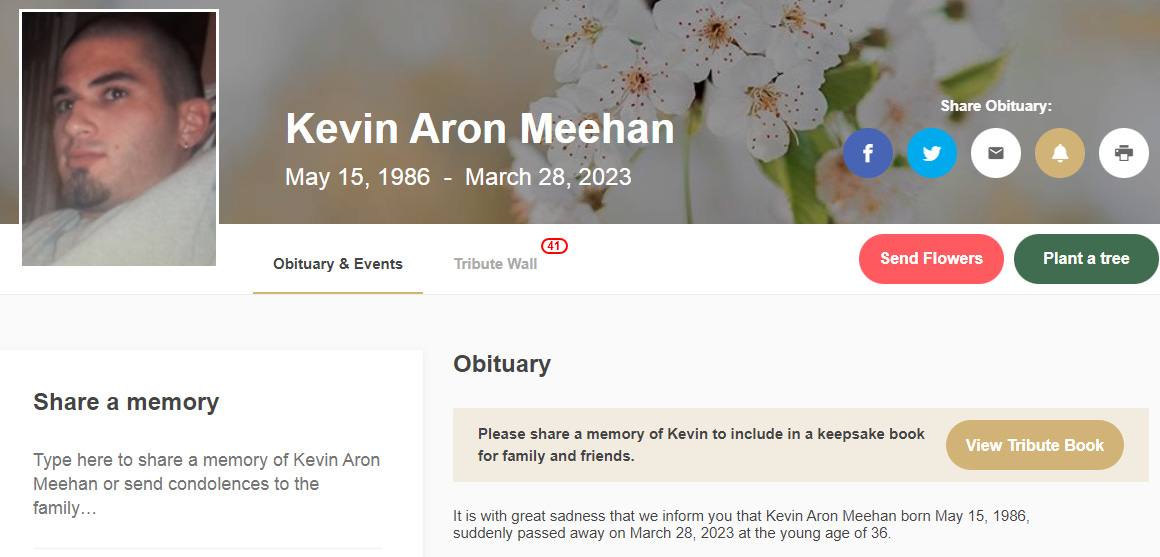




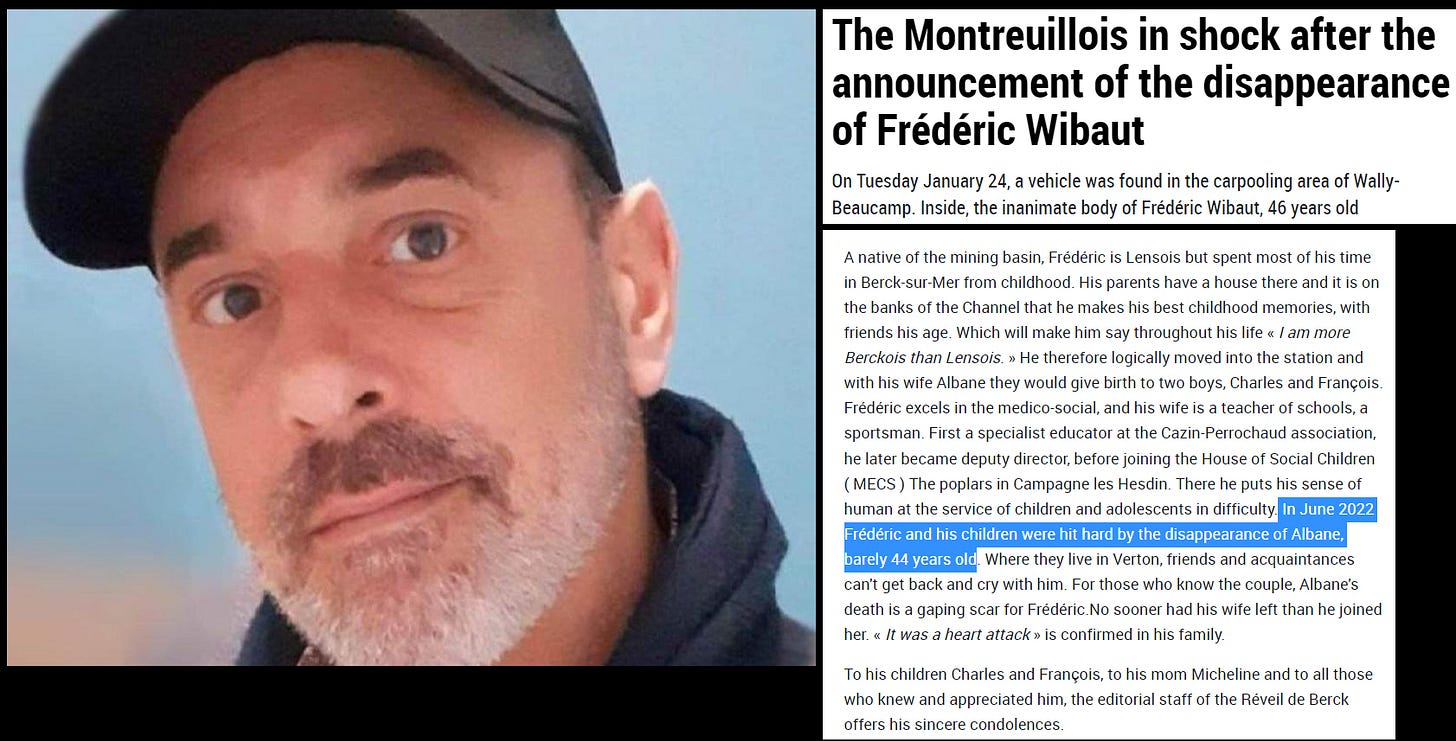







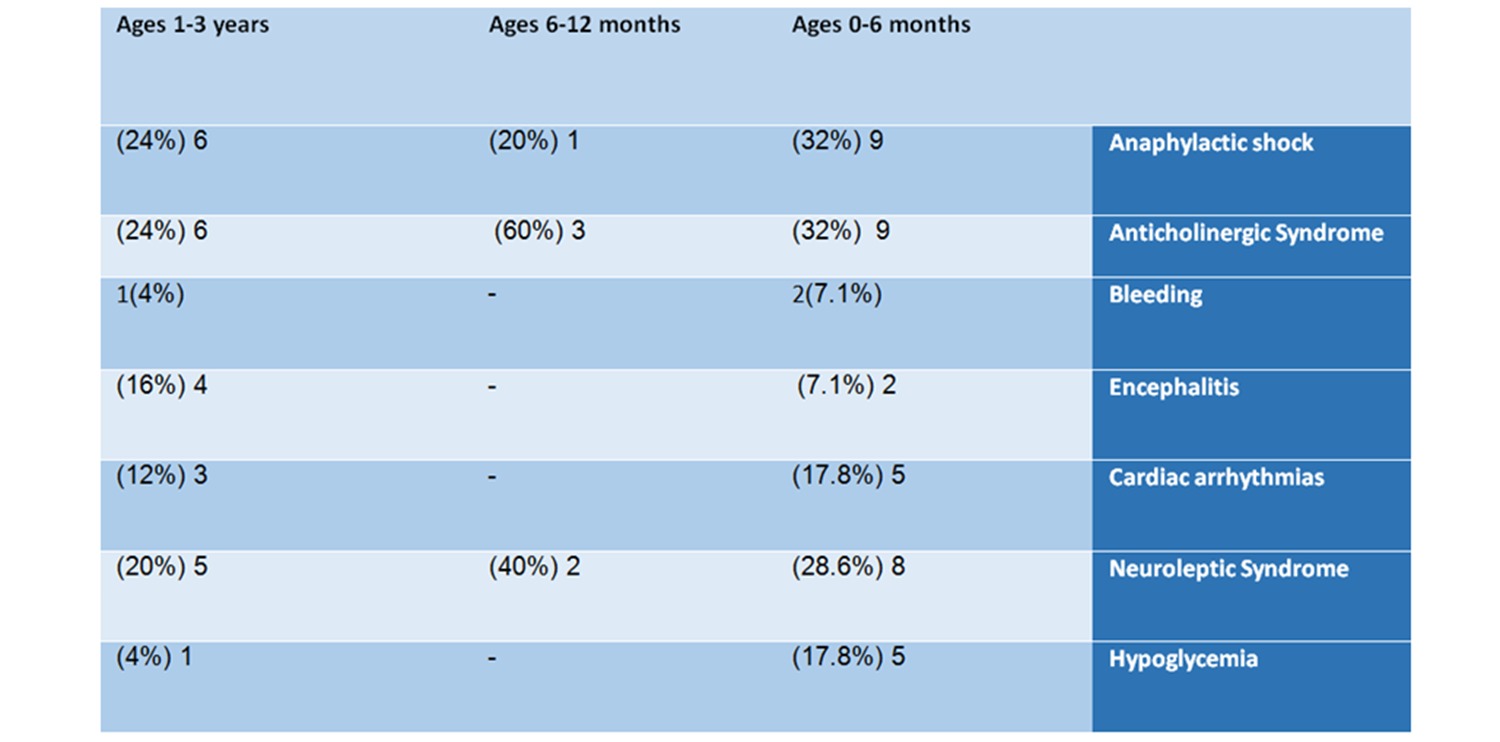
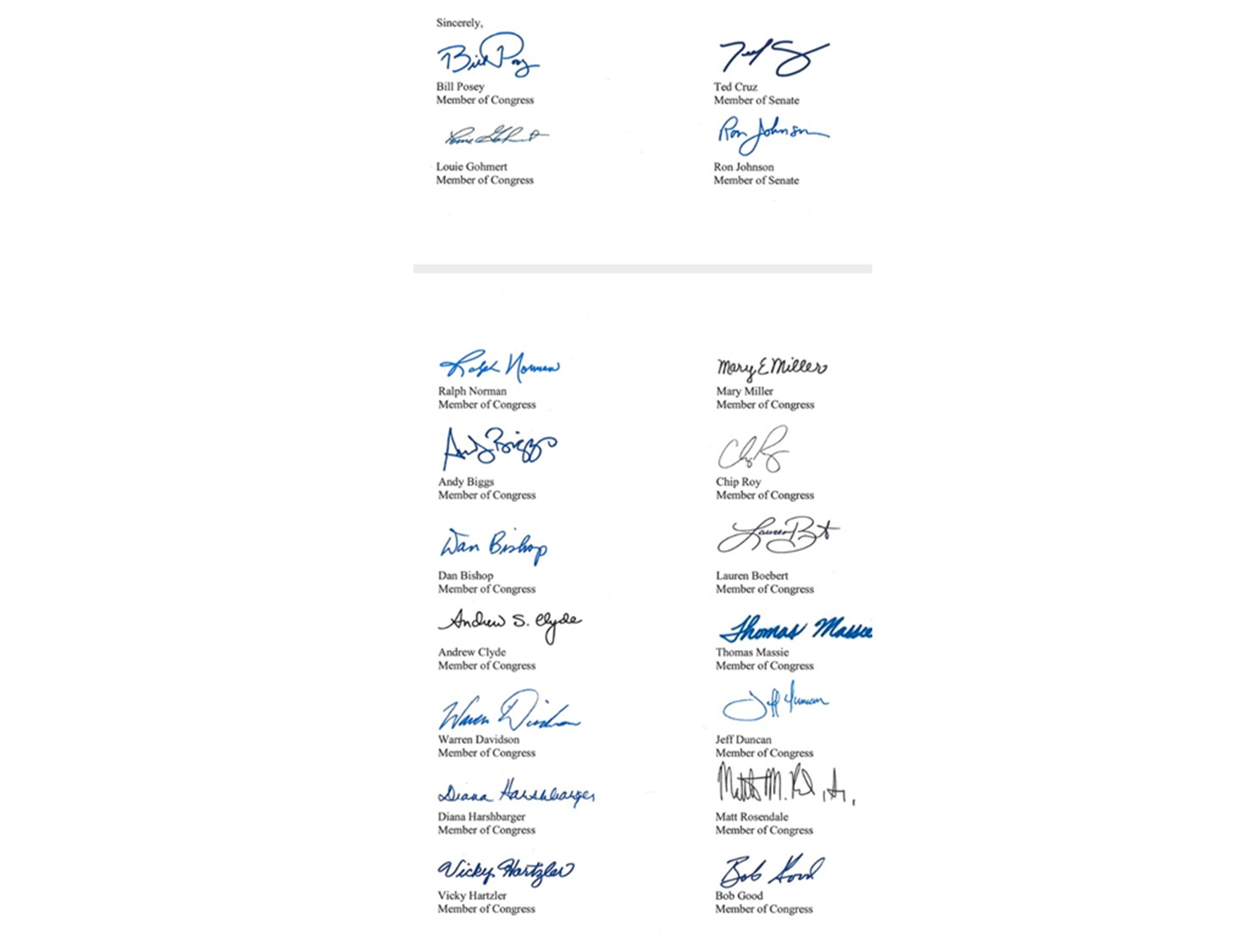



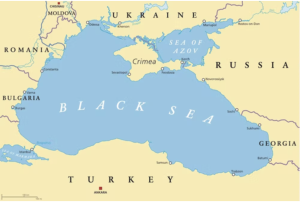
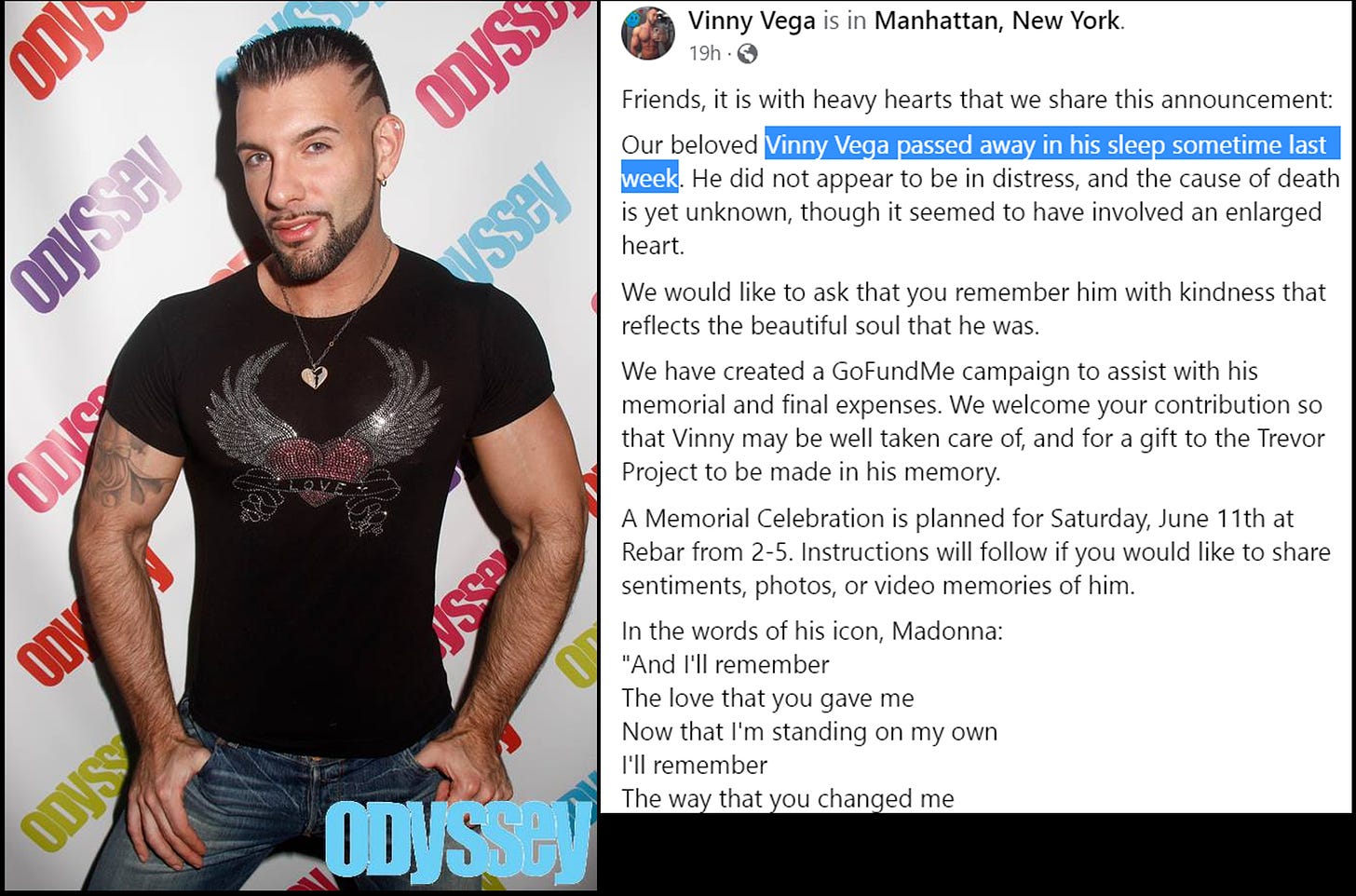


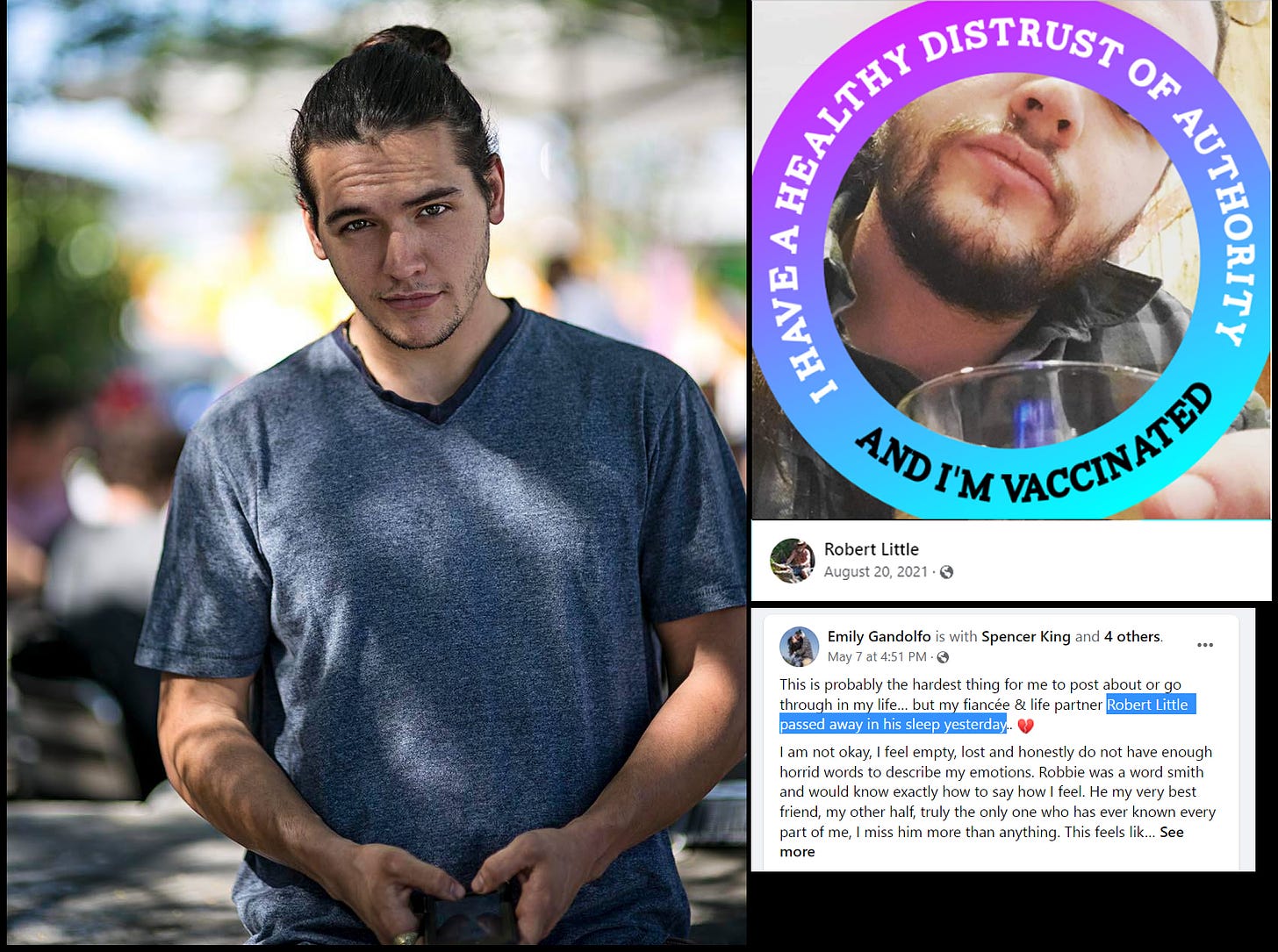


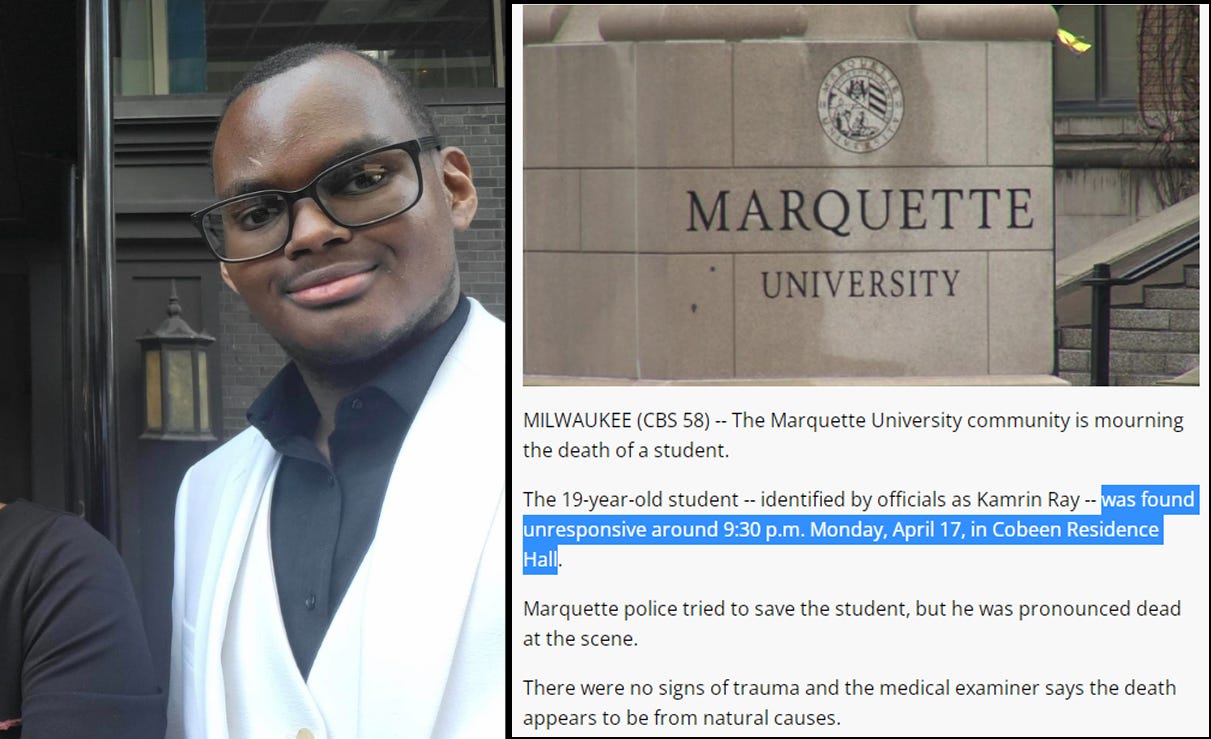




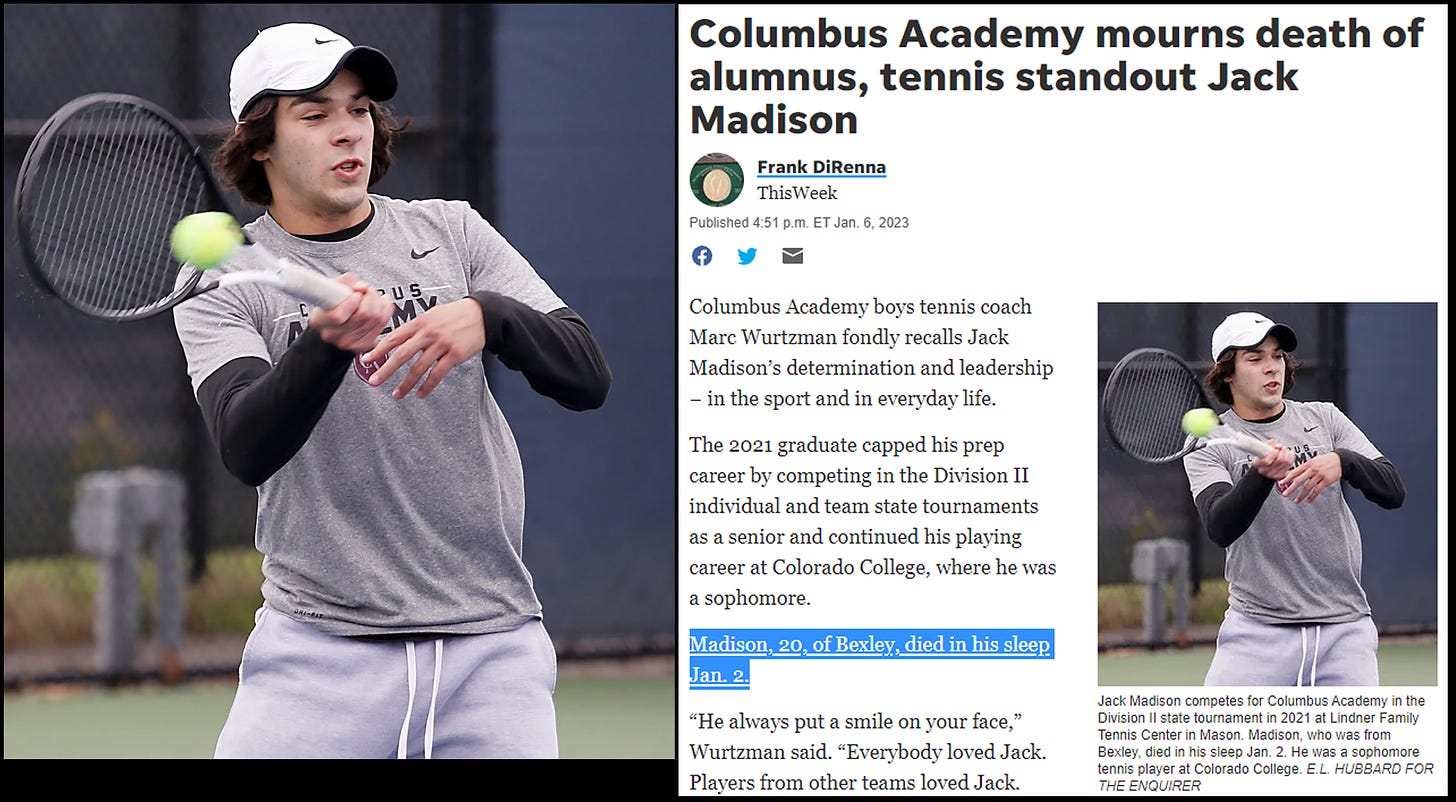

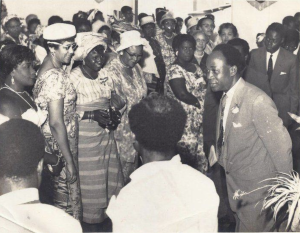 This same outlook permeated the anti-imperialist governments in existence at the time of the founding of the OAU. Dr. Kwame Nkrumah, the then President of the First Republic of Ghana exemplified the concept of “positive action” which was employed in the independence struggle which he led in the British colonial Gold Coast from 1947-1957.
This same outlook permeated the anti-imperialist governments in existence at the time of the founding of the OAU. Dr. Kwame Nkrumah, the then President of the First Republic of Ghana exemplified the concept of “positive action” which was employed in the independence struggle which he led in the British colonial Gold Coast from 1947-1957.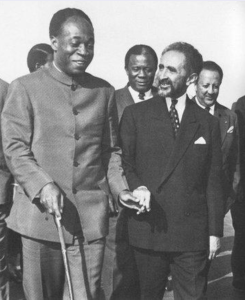 Peace negotiations have taken place between the armed opposition groupings in Darfur and the border areas in the Abyei, Blue Nile and South Kordofan regions of the country with the Transitional Military Council (TMC) which was headed by General Abdel Fattah al-Burhan and General Mohamed Hamden Dagalo (Hemitti). The character of these discussions over the last four years has resulted in a reconfiguration of alliances in Sudan. After the October 2021 coup carried out by the TMC against the Transitional Sovereign Council (TSC) represented by the then interim Prime Minister Abdalla Hamdok, several of the armed opposition groupings within the Sudanese Revolutionary Front (SRF) supported the SAF/RSF coup.
Peace negotiations have taken place between the armed opposition groupings in Darfur and the border areas in the Abyei, Blue Nile and South Kordofan regions of the country with the Transitional Military Council (TMC) which was headed by General Abdel Fattah al-Burhan and General Mohamed Hamden Dagalo (Hemitti). The character of these discussions over the last four years has resulted in a reconfiguration of alliances in Sudan. After the October 2021 coup carried out by the TMC against the Transitional Sovereign Council (TSC) represented by the then interim Prime Minister Abdalla Hamdok, several of the armed opposition groupings within the Sudanese Revolutionary Front (SRF) supported the SAF/RSF coup.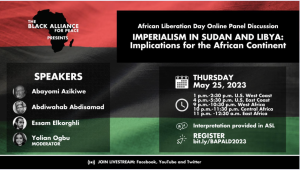 hab Sheikh Abdisamad, a Somali Kenyan and Kenyan citizen. He is the Executive Director of the Institute for Horn of Africa Studies and a specialist in political science, conflict resolution, and rural development; Essam Elkorghli, an education specialist who has studied the impact of the United States and NATO destruction of Libya; and the moderator, Yolian Ogbu, a first-generation Eritrean American studying political science and communications. She has served as the youngest Student Government Association (SGA) president in the University of North Texas history on the first all-women of color ticket no less. An organizer at heart, Yolian was also on the National Women’s March 2019 Youth Empower Committee and works within her cohort to increase the wave of civic engagement in young women across the country. The live stream of the webinar
hab Sheikh Abdisamad, a Somali Kenyan and Kenyan citizen. He is the Executive Director of the Institute for Horn of Africa Studies and a specialist in political science, conflict resolution, and rural development; Essam Elkorghli, an education specialist who has studied the impact of the United States and NATO destruction of Libya; and the moderator, Yolian Ogbu, a first-generation Eritrean American studying political science and communications. She has served as the youngest Student Government Association (SGA) president in the University of North Texas history on the first all-women of color ticket no less. An organizer at heart, Yolian was also on the National Women’s March 2019 Youth Empower Committee and works within her cohort to increase the wave of civic engagement in young women across the country. The live stream of the webinar 


 The Worldwide Corona Crisis, Global Coup d’Etat Against Humanity
The Worldwide Corona Crisis, Global Coup d’Etat Against Humanity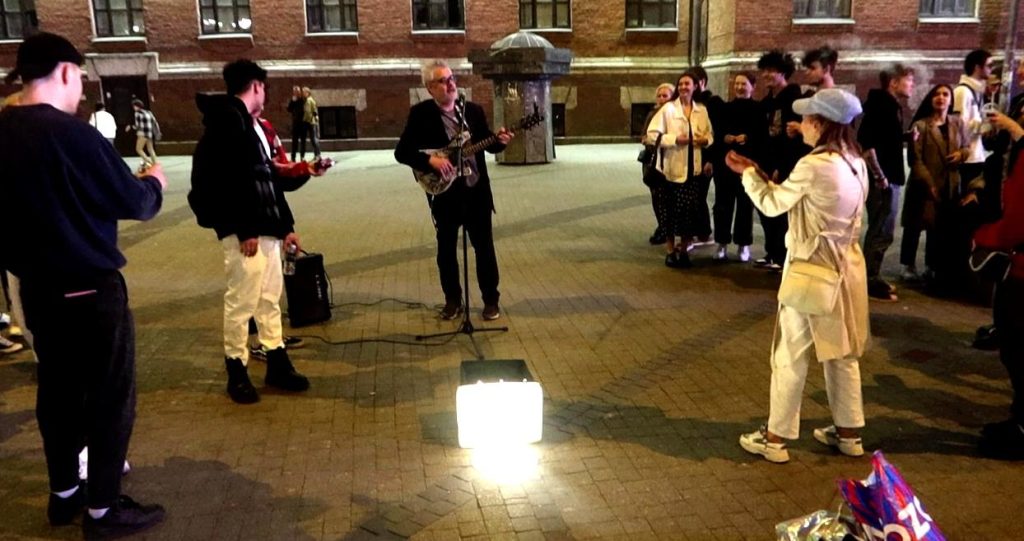
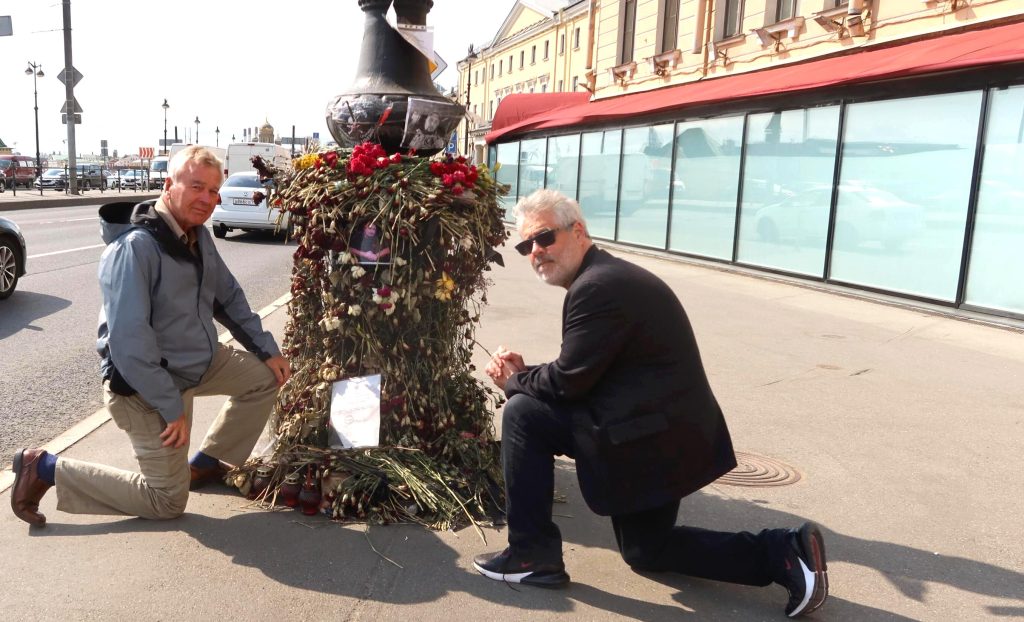

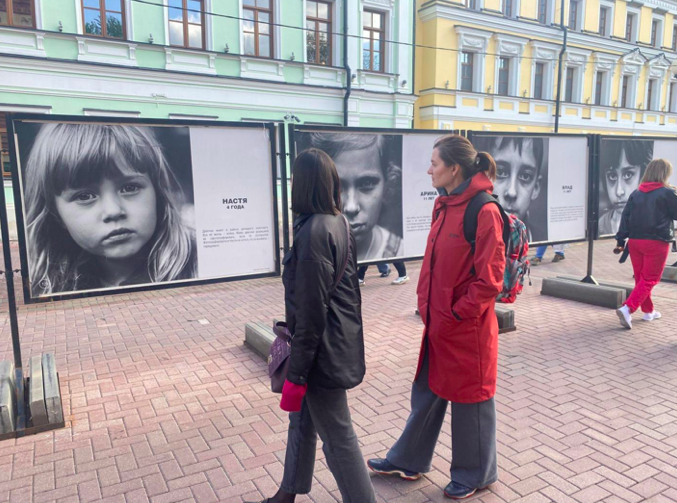
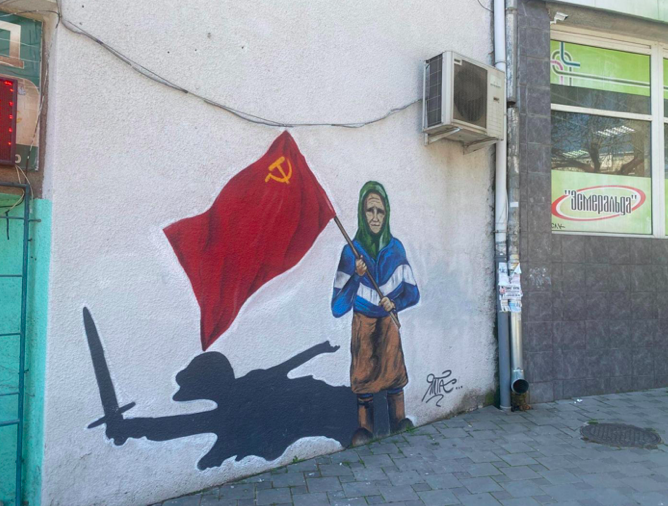



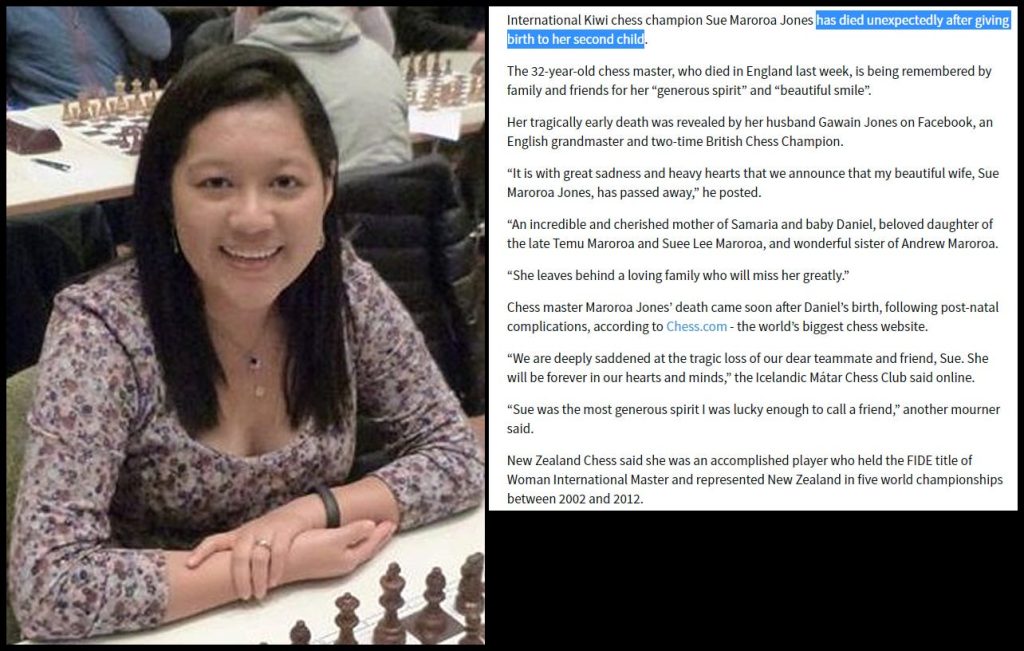




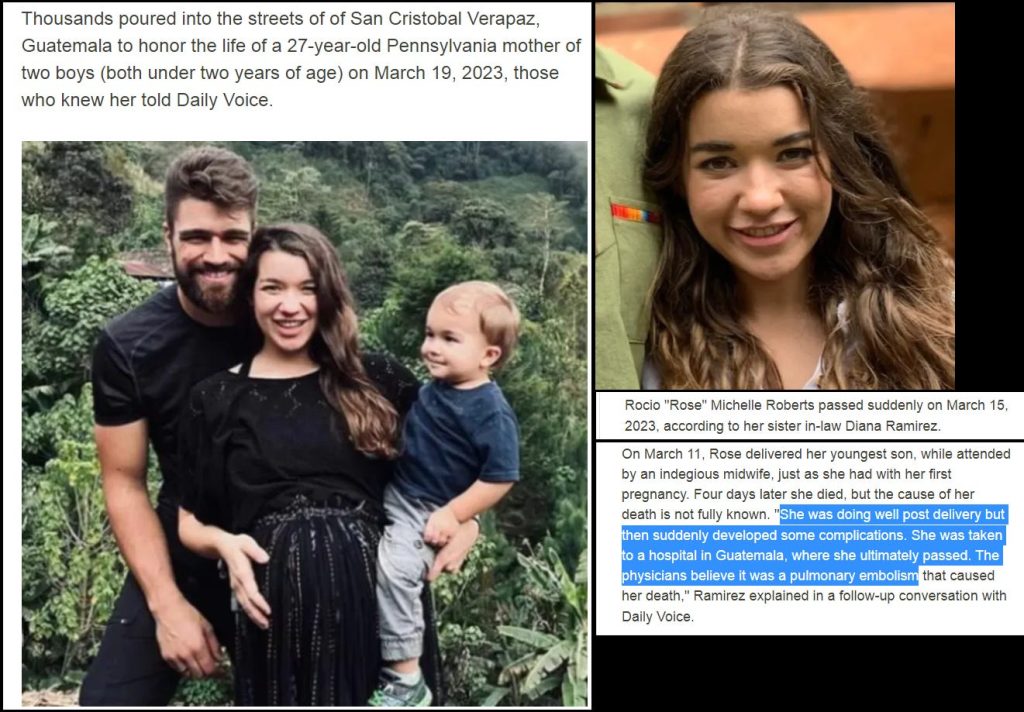


 The COVID “Killer Vaccine”. People Are Dying All Over the World. It’s a Criminal Undertaking
The COVID “Killer Vaccine”. People Are Dying All Over the World. It’s a Criminal Undertaking An Interview with Satan on the Eve of His Retirement
An Interview with Satan on the Eve of His Retirement Look Up! Wake Up, People! You Are Being “Suicided in Warp Speed”.
Look Up! Wake Up, People! You Are Being “Suicided in Warp Speed”. Don’t Let Them Rewrite History: Ventilators Killed People… and It Was No Accident
Don’t Let Them Rewrite History: Ventilators Killed People… and It Was No Accident Excess Deaths in the UK: 10,000 More Brits Are Dying. Experts Not Sure Why.
Excess Deaths in the UK: 10,000 More Brits Are Dying. Experts Not Sure Why. COVID-19: Camouflaging Even Greater Threats to Democracy and Public Health: Dr. Naomi Wolf
COVID-19: Camouflaging Even Greater Threats to Democracy and Public Health: Dr. Naomi Wolf The WEF “Cyber Attack” Scenario: Another Crisis “Much Worse Than COVID”, Paralysis of Power Supply, Communications, Transportation
The WEF “Cyber Attack” Scenario: Another Crisis “Much Worse Than COVID”, Paralysis of Power Supply, Communications, Transportation Artificial Intelligence (AI) and the COVID Pandemic: A “Truth Bomb” Explodes to Illuminate the War on Humanity
Artificial Intelligence (AI) and the COVID Pandemic: A “Truth Bomb” Explodes to Illuminate the War on Humanity Video: A Jewish-Russian Proxy President: Zelensky Transformed into a Nazi?
Video: A Jewish-Russian Proxy President: Zelensky Transformed into a Nazi? The United States Has Been Destroyed by Its Ruling Elites
The United States Has Been Destroyed by Its Ruling Elites The Battle of Bakhmut: Russian Forces Take Full Control of the Province
The Battle of Bakhmut: Russian Forces Take Full Control of the Province “The Treason of the Intellectuals”
“The Treason of the Intellectuals” Neo-Nazism and the War in Ukraine: Interview with Michel Chossudovsky
Neo-Nazism and the War in Ukraine: Interview with Michel Chossudovsky Video: Pfizer’s “Secret” Report on the COVID Vaccine. Beyond Manslaughter. The Evidence Is Overwhelming. The Vaccine Should be Immediately Withdrawn Worldwide
Video: Pfizer’s “Secret” Report on the COVID Vaccine. Beyond Manslaughter. The Evidence Is Overwhelming. The Vaccine Should be Immediately Withdrawn Worldwide Small Percent of Vaccine Batches Responsible for Large Number of Adverse Reactions, Analysts Claim
Small Percent of Vaccine Batches Responsible for Large Number of Adverse Reactions, Analysts Claim 1500 Scientists Say “Climate Change Not Due to CO2” – The Real Environment Movement Was Hijacked
1500 Scientists Say “Climate Change Not Due to CO2” – The Real Environment Movement Was Hijacked Western Weapons to Ukraine: Black Market for Terrorists “On Command”
Western Weapons to Ukraine: Black Market for Terrorists “On Command” Two UK Babies Dead From Myocarditis: Total of 16 Babies Developed “Severe Myocarditis” in Wales & England, Eight Ended Up in Intensive Care
Two UK Babies Dead From Myocarditis: Total of 16 Babies Developed “Severe Myocarditis” in Wales & England, Eight Ended Up in Intensive Care COVID-19 Vaccine Injuries: Multiple Heart Attacks or Multiple Strokes
COVID-19 Vaccine Injuries: Multiple Heart Attacks or Multiple Strokes The Trump Presidency: RIP
The Trump Presidency: RIP